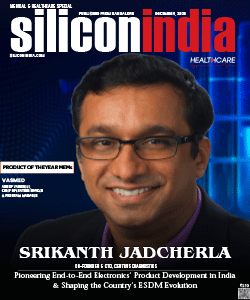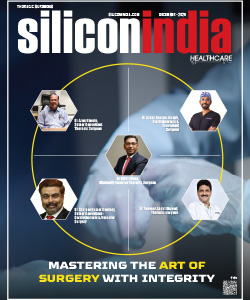Reducing the Cost of Saving Lives in India
India - a population of over a billion and a several issues plaguing the country’s healthcare infrastructure.
India’s medical sector caters to a massive population spread over a vast region. Tertiary level healthcare has not been very accessible to 70% of the Indian population – with overcrowded hospitals in the metros, and few high end hospitals in the small towns and cities.
The condition is so bad that people have to travel hundreds of kilometres in order to get medical treatment– and then spend lakhs of rupees.
![]()
The rise in costs of consultation, diagnostic services, and surgeries thus brings the very essential question to light – Can you afford to be sick in the country anymore?
Health costs in India to rise at double the inflation rate in 2018: Survey
Outpatient expenses will be much higher than hospitalisation costs
A report by Mercer Marsh Benefits showed that the medical trend rate will be 10 per cent in India,while inflation will be at 5 per cent.
This problem prompts the need for alternative healthcare models – ones that do not depend on the longevity of any government, but are rather more holistic and well-rounded.
- Cost of heart surgery today - Rs 200,000
- Annual rise in medical cost - 10%
- Future value of heart surgery after 5 years* - Rs 322,102
- Future value of heart surgery after 10 years* - Rs 518,748
- Future value of heart surgery after 15 years* - Rs 835,450
![]()
That considered, there are a few hospitals and visionaries taking up the responsibility for the country’s health by offering affordable medical services, and setting a noble as well as a profitable healthcare model.
Govindappa Venkataswamy, Aravind Eye Hospital
Established in 1972 in Madurai, it is a network of hospitals that have played a major role in eradicating cataract-related blindness in India. Founded by Govindappa Venkataswamy, the hospital has seen over 55 million patients, performed over 6.8 million surgeries – prompting a 1993 Harvard Business Case Study on the Aravind model.
Its founder, popularly known as 'Dr V.', Govindappa Venkataswamy was an Indian ophthalmologist who developed Aravind Hospital’s high quality, high volume, and low-cost service delivery model. Venkataswamy personally performed over 100,000 eye surgeries despite being crippled by rheumatoid arthritis at the age of 30.
The hospital chain further expanded its eye care services through Aurolab, Aravind Hospital’s internationally certified manufacturing facility that brought the price of the intraocular lens down to one-tenth of international prices, making it affordable for developing countries – thus adding to the cost-effective, patient-centric model of the hospital.
Niira Radia, Nayati Healthcare
Headed by Niira Radia, Nayati Healthcare’s flagship hospital, Nayati Medicity in Mathura is the only comprehensive super-specialty quaternary care hospital catering to a population of over 30 million, covering a region that spans from Delhi NCR to Gwalior in Madhya Pradesh. Established with the aim of taking treatment closer to people, the Group is committed to providing transparent, competitive, accessible, affordable and accountable healthcare services to all – at par with global standards.
Started as a healthcare alternative to metropolitan hospitals, Nayati Healthcare’s foundational vision was set in Badrinath by Niira Radia, with four Mobile Medical Units (MMUs), a team of 36 paramedics serving pilgrims on their pious journey, free of cost.
Since then, the group has now grown into a 1,200-bed chain – with hospitals in strategic locations across North India, offering affordable medical care to people living in the tier II and tier III cities of India. Talking about the group’s expansion, Nayati’s Chairperson, Niira Radia stated, “India has seen an extremely skewed distribution of healthcare infrastructure, technology and expertise — most of which is concentrated in the metros. The norm in India has been such that for super-specialist treatment, the patient is mostly expected to travel 100-300 kms to the nearest metros. With Nayati, our vision is to remove these boundaries of exclusivity in healthcare and move to where the real India lives”, Niira Radia added.
Furthermore, Nayati Medicity, Mathura is the first and the only hospital in Mathura to receive NABH (National Accreditation Board for Hospitals & Healthcare Providers) Accreditation.
Mata Amritanandamayi, Amrita Institute of Medical Science
Located in Kochi, Amrita Hospital is one of Kerala’s premier institute-hospitals, equipped with 1300 beds and serving more than 10 lakh outpatients.
A recipient of the British medical Journal Award for the Best surgical Team in South Asia, the hospital was inspired by Mata Amritanandamayi and inaugurated on 17 May 1998 by the then Indian Prime Minister, Atal Bihari Vajpayee in her presence.
Since then, the hospital has provided $70 million+ worth of charitable medical care with 3 million patients treated free of cost. The hospital also conducts 100 free camps in economically backward and remote areas with diagnostic treatment and medication provided for free.
The hospital also has outpatient clinics in Kerala where it provides free medical treatment, particularly to people suffering from HIV/AIDS as well as a cancer hospice in Mumbai providing medical treatment and other basic amenities such as free medicines, rice, and other edible items to the poor suffering from terminal cancer.
Gullapalli N Rao, LV Prasad Eye Institute
A not-for-profit, non-government eye care institution, LV Prasad in its 32 years of service has treated over 26.04 million people. Out of the number of patients, 50% of the services were provided free of cost regardless of their complexity. Also, over 10,0000 surgeries have been performed without charging any money from the patients. The hospital offers comprehensive patient care, sight enhancement, community eye health etc. Times of India and the Week Magazine have ranked LVPEI as the best Ophthalmology Hospital in India.
From the past two decades the hospital is providing free services to all defence personnel, be it Jawans, Seniors Officials or their dependents. The hospital is a World Health Organization Collaborating Centre for Prevention of Blindness.
Its innovative and comprehensive LVPEI Eye Health Pyramid has been adopted as a model by the Government of India as well as various developing countries.
T. Palaniappan, Medway Hospitals
Founded by Dr T. Palaniappan, Medway Hospitals was started in 2012 to create an ecosystem of compassionate healthcare. Medway has a model similar to that of Nayati Healthcare, wherein they’ve expanded their presence to different Tier II cities. The hospital currently has three integrated multi-speciality units in Tamil Nadu—two in Chennai and one in Kumbakonam with expansion plans tied to other locations and overseas projects.
The hospital espouses the concept of ‘world-class quality healthcare to people of all segments at affordable prices with no hidden costs’, which, as per Dr Palaniappan is the hospital’s USP.
“We found that most Tier II cities were lacking when it came to standard medical care. This was a trigger point and we decided to expand in the Tier II cities, as most of the big names in the medical industries dominate larger cities. As Tier 2 cities are still untapped, we believe we can make a significant difference,” he said.
Read More News :
5 Most Beautiful Places in the Land of Blue Dragon (Vietnam)
5 Basic Indian Dining Etiquettes You Should Definitely Follow

.jpg)

